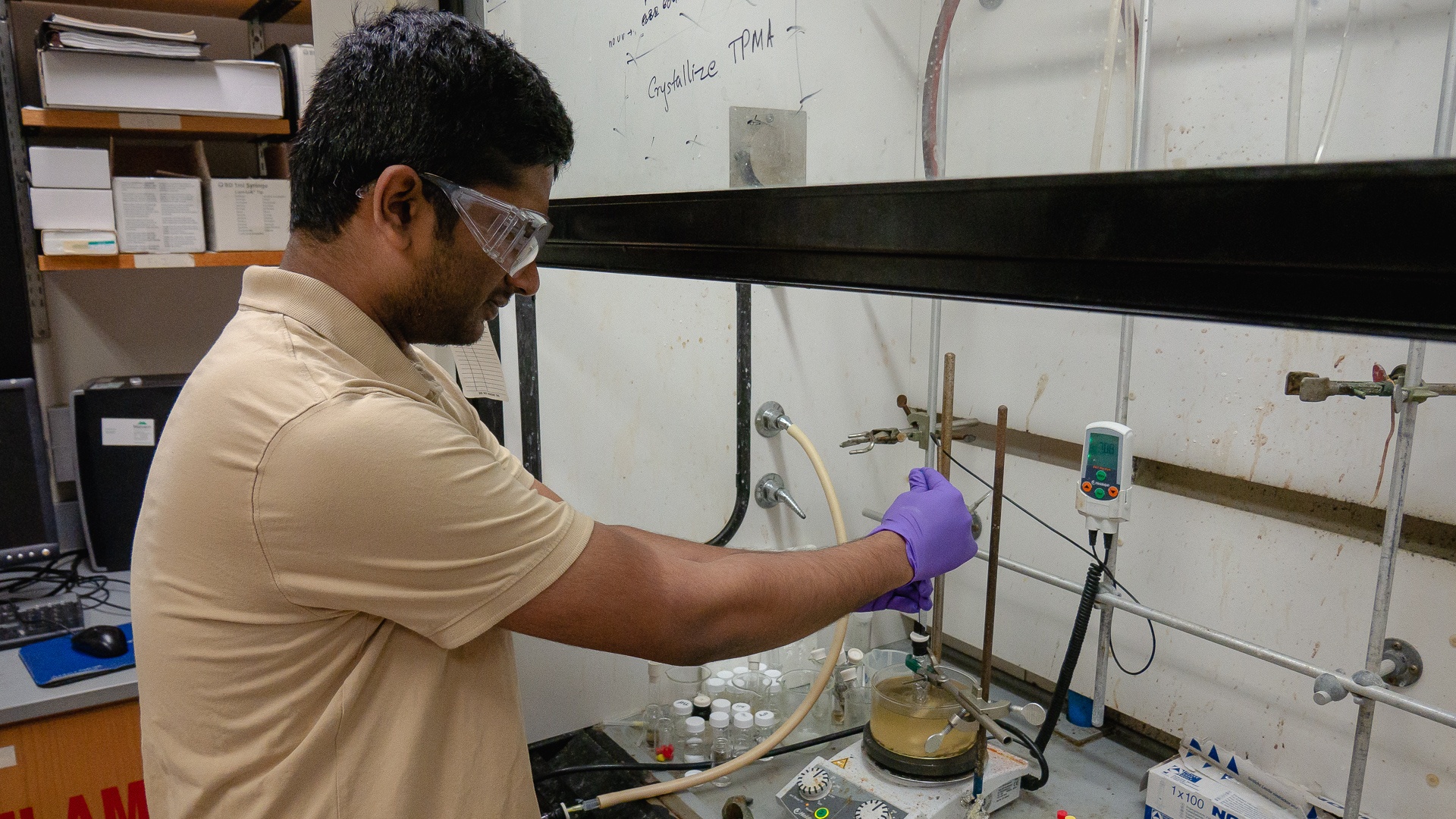
What do Aristotle, Sir Francis Bacon, René Descartes, and Dr. Dieter Cremer, founder of SMU’s Computational and Theoretical Chemistry Group, all have in common?
They were all fascinated by the same mysterious natural phenomenon — that hot water appears to freeze faster than cold water does.
In his Meteorologica, Aristotle states:
“The fact that the water has previously been warmed contributes to its freezing quickly: for so it cools sooner. Hence many people, when they want to cool hot water quickly, begin by putting it in the sun. So the inhabitants of Pontus when they encamp on the ice to fish (they cut a hole in the ice and then fish) pour warm water round their reeds that it may freeze the quicker, for they use the ice like lead to fix the reeds.”
The Mpemba Effect
The phenomenon has been popularized in the last century as the Mpemba Effect, named for a Tanzanian student, Erasto Mpemba, whose eagerness for ice cream inspired him to place his boiling milk mixture directly into the freezer. To his disbelief, his ice cream was ready before his friends’ mixtures had solidified.
In the 2,000 odd years since Aristotle first commented on this bizarre phenomenon, no clear consensus or scientific theory has emerged to explain it. Many scientists have offered theories and conducted studies, but all have struggled to record consistent data about both the Mpemba effect and about their hypotheses.
Computational Chemistry Cracks the Case?
In December 2016, the innovative and rapidly developing field of computational and theoretical chemistry weighed in on this long-standing scientific puzzle.
Research conducted by Dr. Cremer and Ph.D. in Chemistry students in his CATCO group at SMU, along with colleagues from Nanjing University in China, offered a new explanation for the Mpemba effect: the increased presence of strong hydrogen bonds in hot water.
Using the power of SMU’s ManeFrame supercomputer, Cremer and his colleagues investigated water clusters of varying sizes and used quantum chemical calculations to develop a new computer model of water, identifying and ranking 16 different types of hydrogen bonds based on strength.
They discovered that the prevalence and type of hydrogen bonds in water change as water temperature increases. Water at colder temperatures is composed predominantly of weak, electrostatic H-bonds that are transient, forming loose networks that break apart and re-form easily. As water gets hot, most of these weak H-bonds break apart and strong, covalent H-bonds that are more stable create a structured network that is reluctant to break apart.
What does this have to do with the Mpemba effect? Cremer and his colleagues theorize that hot water freezes faster because the strong network of covalent H-bonds allows for a more rapid formation of ice’s specific lattice structure.
As the study puts it, “The analysis … leads us to propose a molecular explanation for the Mpemba effect. In warm water, the weaker H-bonds with predominantly electrostatic contributions are broken, and smaller water clusters with … strong H-bonding arrangements exist that accelerate the nucleation process that leads to the hexagonal lattice of solid ice.”
As Cremer remarked to ChemViews Magazine at the time of publication, "The effect was known to Aristotle and used in medieval times, and rediscovered by Mpemba...It has been confirmed by dozens of researchers and there have been various explanations. We have been able to offer for the first time a molecular explanation because we are first to distinguish between the different hydrogen bonds in liquid water and water clusters using their vibrational properties.”
The Continued Exploration of Nature
Two thinkers, Aristotle and Cremer, separated by a vast expanse of time and by a vast technological differential, but both fascinated by the same natural question. The advent of computational and theoretical chemistry is opening the door to new, long-anticipated insights in the field of science.

